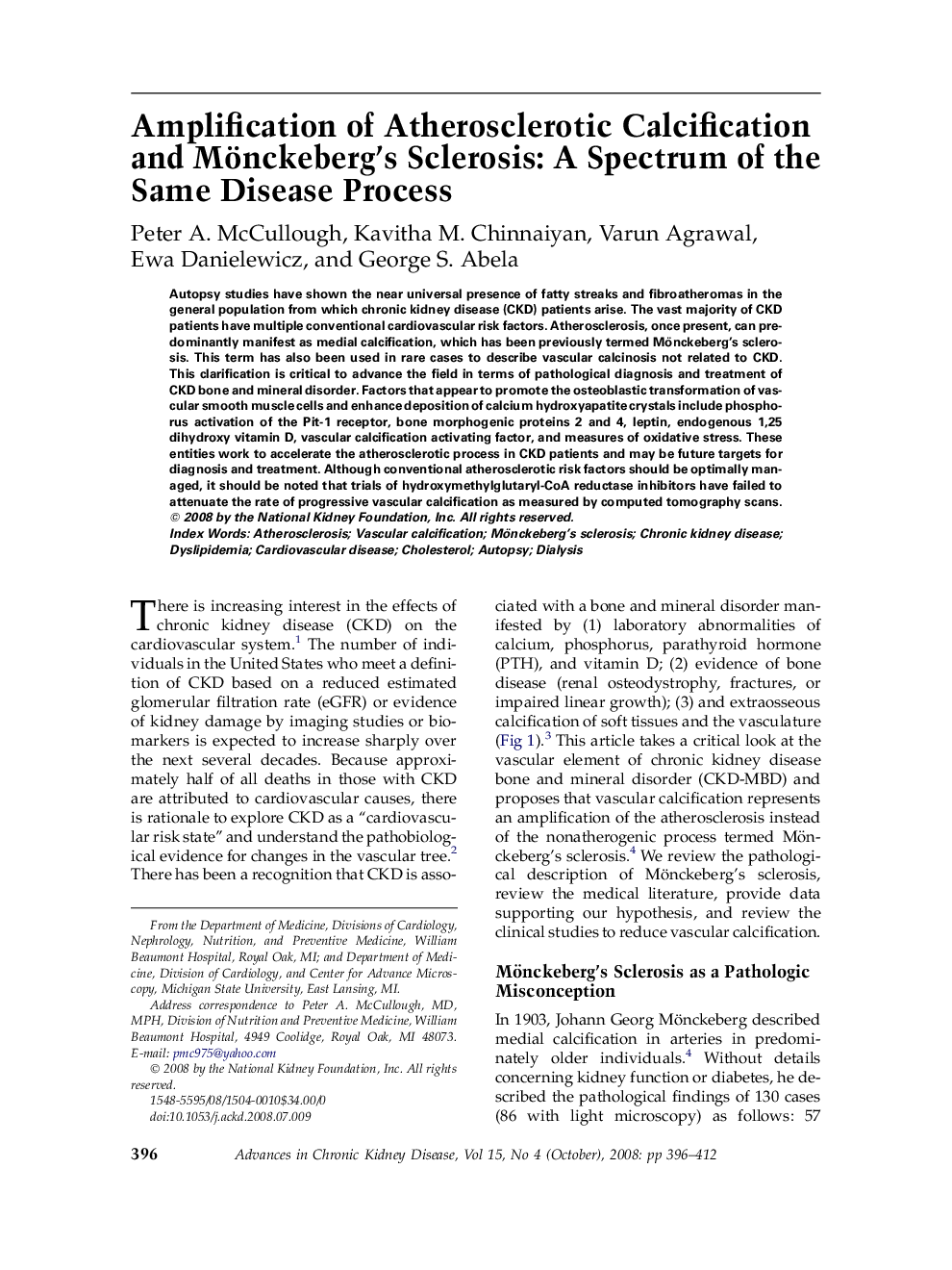| Article ID | Journal | Published Year | Pages | File Type |
|---|---|---|---|---|
| 3847294 | Advances in Chronic Kidney Disease | 2008 | 17 Pages |
Abstract
Autopsy studies have shown the near universal presence of fatty streaks and fibroatheromas in the general population from which chronic kidney disease (CKD) patients arise. The vast majority of CKD patients have multiple conventional cardiovascular risk factors. Atherosclerosis, once present, can predominantly manifest as medial calcification, which has been previously termed Mönckeberg's sclerosis. This term has also been used in rare cases to describe vascular calcinosis not related to CKD. This clarification is critical to advance the field in terms of pathological diagnosis and treatment of CKD bone and mineral disorder. Factors that appear to promote the osteoblastic transformation of vascular smooth muscle cells and enhance deposition of calcium hydroxyapatite crystals include phosphorus activation of the Pit-1 receptor, bone morphogenic proteins 2 and 4, leptin, endogenous 1,25 dihydroxy vitamin D, vascular calcification activating factor, and measures of oxidative stress. These entities work to accelerate the atherosclerotic process in CKD patients and may be future targets for diagnosis and treatment. Although conventional atherosclerotic risk factors should be optimally managed, it should be noted that trials of hydroxymethylglutaryl-CoA reductase inhibitors have failed to attenuate the rate of progressive vascular calcification as measured by computed tomography scans.
Keywords
Related Topics
Health Sciences
Medicine and Dentistry
Nephrology
Authors
Peter A. McCullough, Kavitha M. Chinnaiyan, Varun Agrawal, Ewa Danielewicz, George S. Abela,
